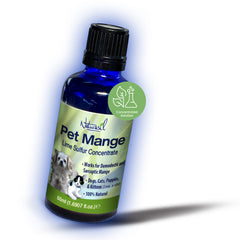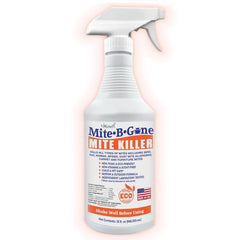You've just spent a lovely afternoon running around the yard with Fido or frolicking with one of your other beloved pets. After a day or two, you notice a mysterious itch forming along your body. At first, you may feel this is nothing more than a slight irritation to something you came into contact with. However, the itch progresses into a suspicious rash as time passes. After scouring the internet, you see pictures of scabies and delve into the signs and symptoms. Could it be that your four-legged family member, who was the host for the much-dreaded Sarcoptes Scabiei, more commonly known as scabies, shared it with you?
Scabies Infections: Animal-to-Human Transmission
While it may seem possible for your family pet or other outdoor animals to transmit scabies to humans, the Centers for Disease Control and Prevention (CDC) states otherwise. Because humans and animals are physiologically and biologically unique, an animal can't transmit the human itch mite—or scabies—through direct contact. This being noted, there may be a slight possibility of scabies transmission should a person infected with scabies pass on these mites to a pet. Since scabies can live for up to 72 hours without a human host, it's theoretically possible for scabies to be transmitted via a pet. However, no solid reports or records indicate such transmission has occurred.
If It's Not Scabies, What Is This Itchy Rash?
Many of those who receive a suspicious rash after communing with an animal may find it hard to believe they didn't receive scabies from an animal. While animals cannot be hosts for human itch mites, they can become infected with another type of scabies mite. These animal-only mites are known as mange. While the mites responsible for mange cannot survive and reproduce within a human host, contact with such mites can result in an itchy skin rash.
As you come in contact with an animal with mange, it's possible these mites can be transmitted into your skin. Although these mites eventually die, they may successfully burrow into your skin. The survival rate for animal mites within a human host is only a couple of days; however, during this duration, the mites can result in skin rash and irritation that appear quite similar to scabies symptoms. Even though the animal mites die off in a couple of days, they can become reinfected if the animals go untreated for mange. Therefore, it may seem as if you're infected by scabies when you're introduced to animal mites on a revolving basis.
Animal and Human Relief: Treating Mange in Pets
The only way to prevent becoming a temporary host for animal mites is to remove them from your pets. While the exact treatment plan may vary based on veterinary recommendations, several universal techniques exist for mange control and treatment.
The most crucial step in treating mange in pets is to isolate the animal from other pets and humans. Consider placing the animal in a large crate or blocking its exit from a room. Several topical, oral, and injection medicines are available to kill the mites responsible for mange effectively. Anti-inflammatory and pain relief medication is often prescribed to provide relief for your pet. The ASPCA states that most pets experience a full recovery after one month of treatment. However, factors such as age and health directly influence the speed and efficiency of treatment.
Preventative Steps to Ward Off Mange
The most essential step in preventing animal mites in your pets is to support their natural immune system. Research has shown that pets who are healthy due to a clean environment and good diet significantly reduce mange infestations. If your pet has been diagnosed with mange, it's imperative to wash all bedding and collars immediately in hot water and dry them via hot air. Much like human itch mites, the mites responsible for mange cannot survive without a host.
If your pet is an indoor animal, consider steam cleaning all carpets and furniture in your home. The most crucial way to prevent an outbreak of mange within your pet is to take Fido for regular vet checkups. This is essential if your pet has been previously diagnosed and treated for mange. The vet will look for skin scrapes, indicating whether the mites have been entirely eliminated.
Naturasil has the perfect all-natural Mange Treatment for all animals aged 3 months and up. It's super easy to use. And all our products are backed by a 33-day money-back guarantee.







